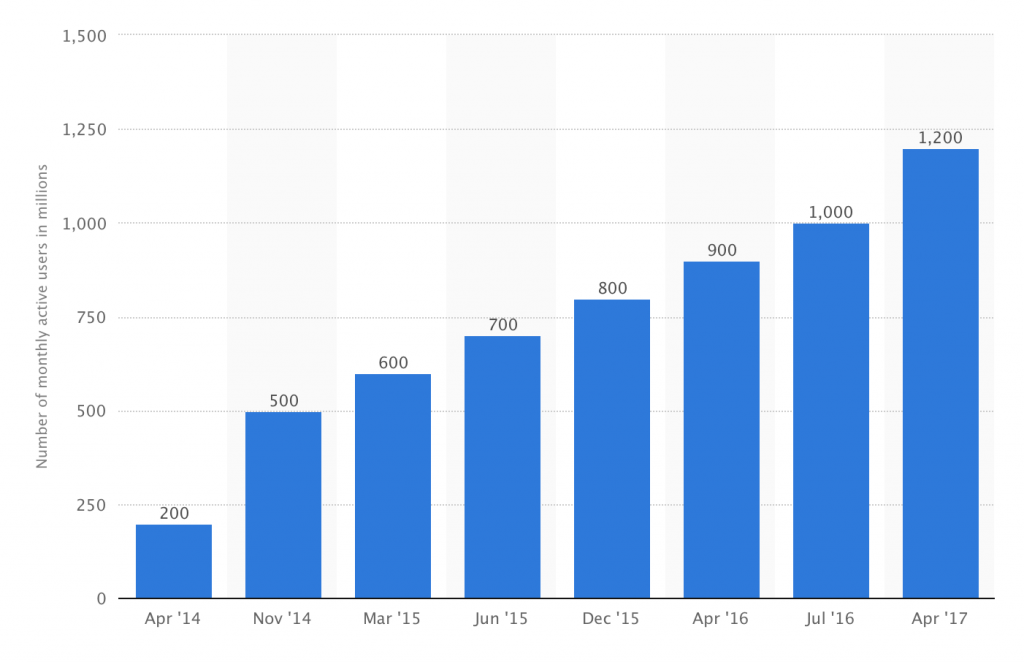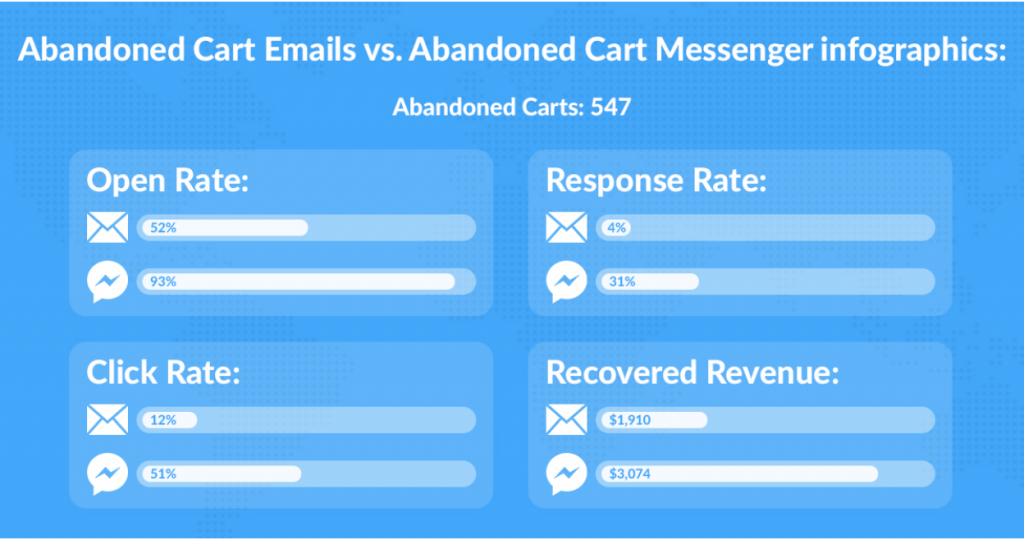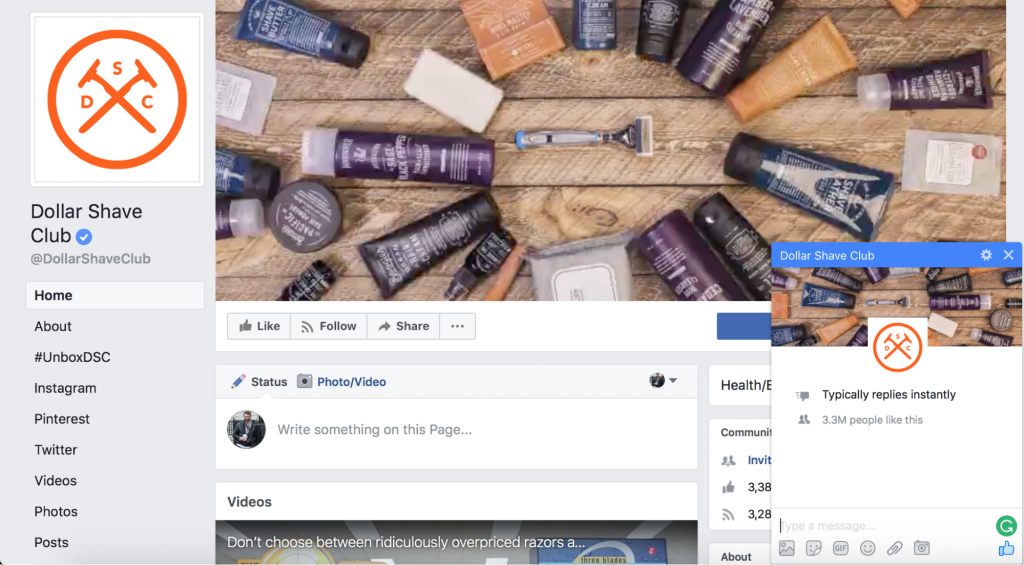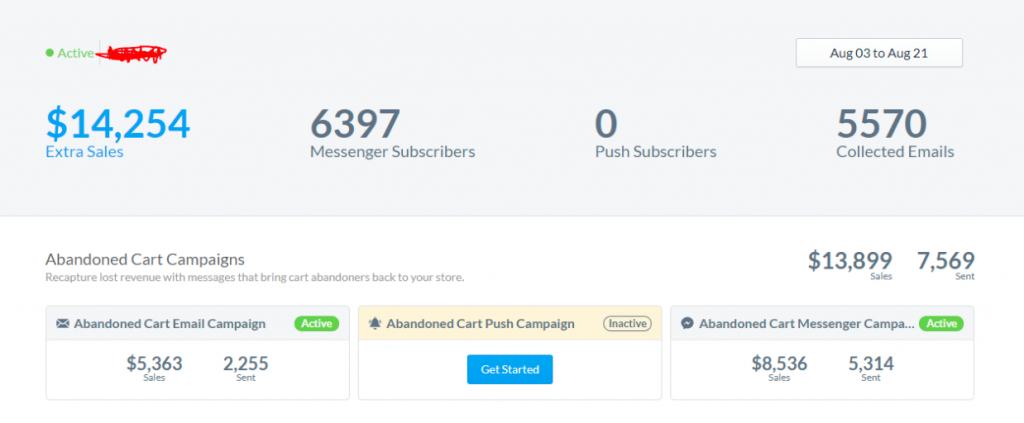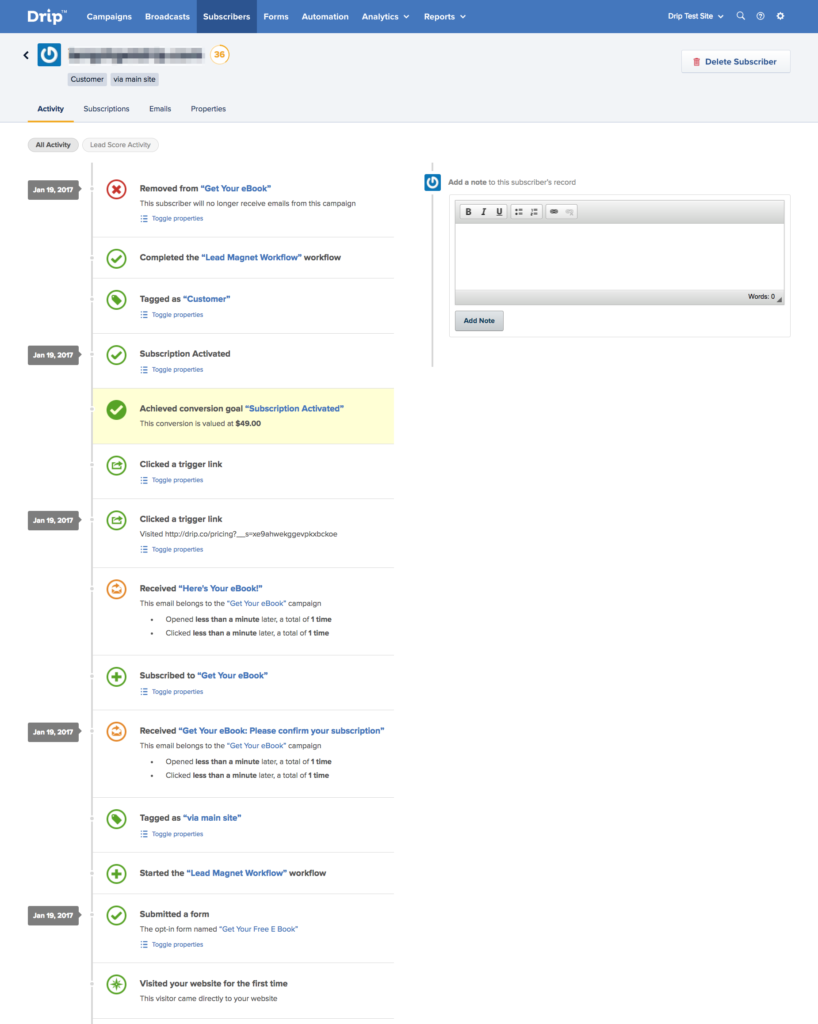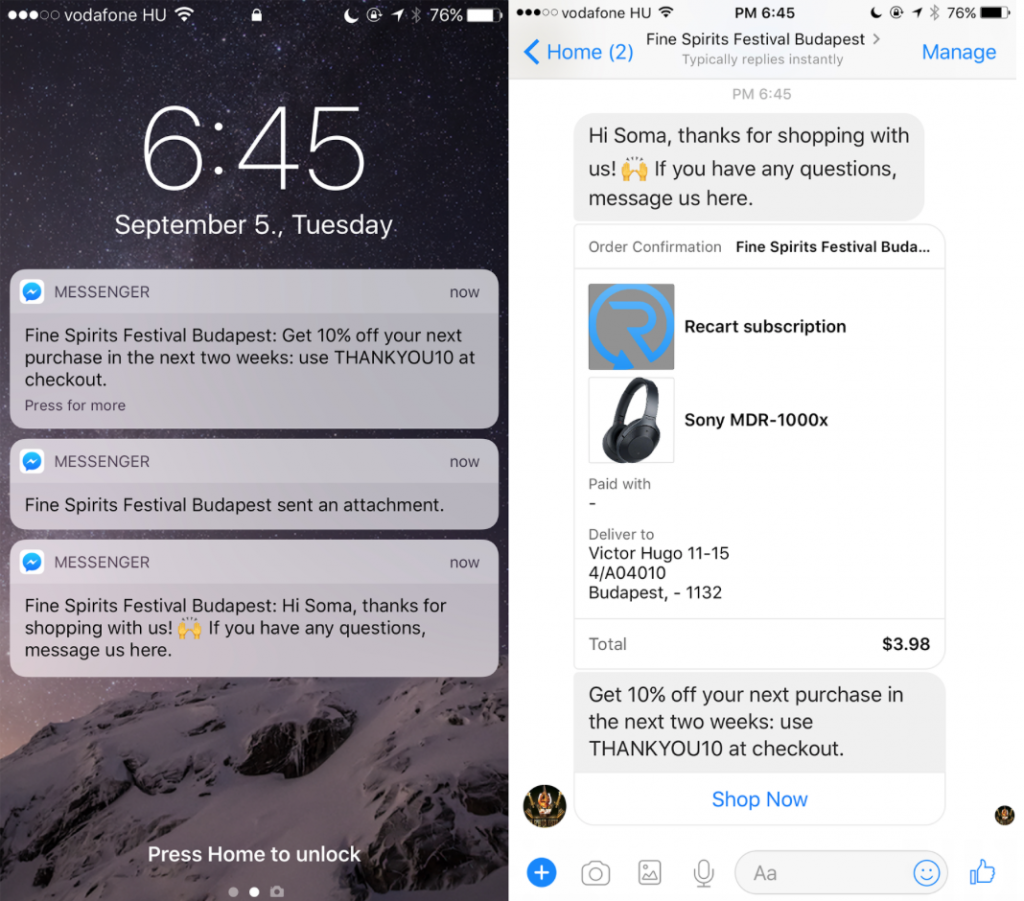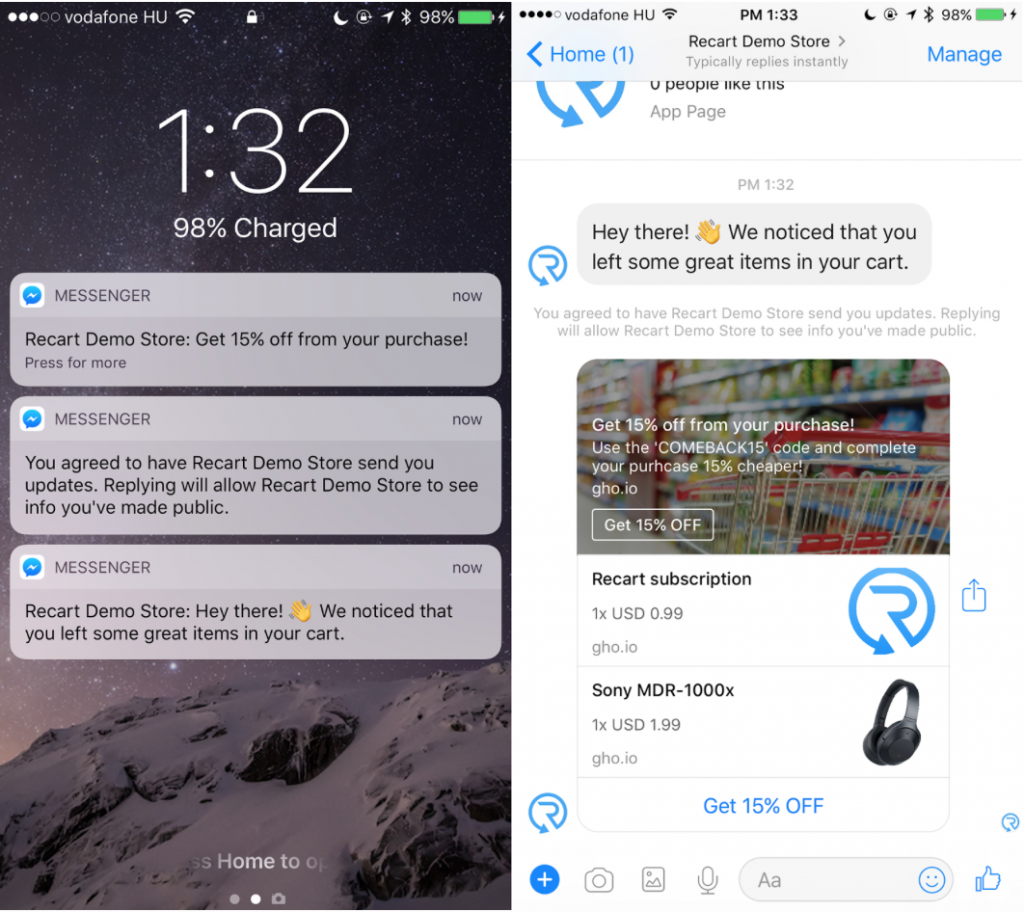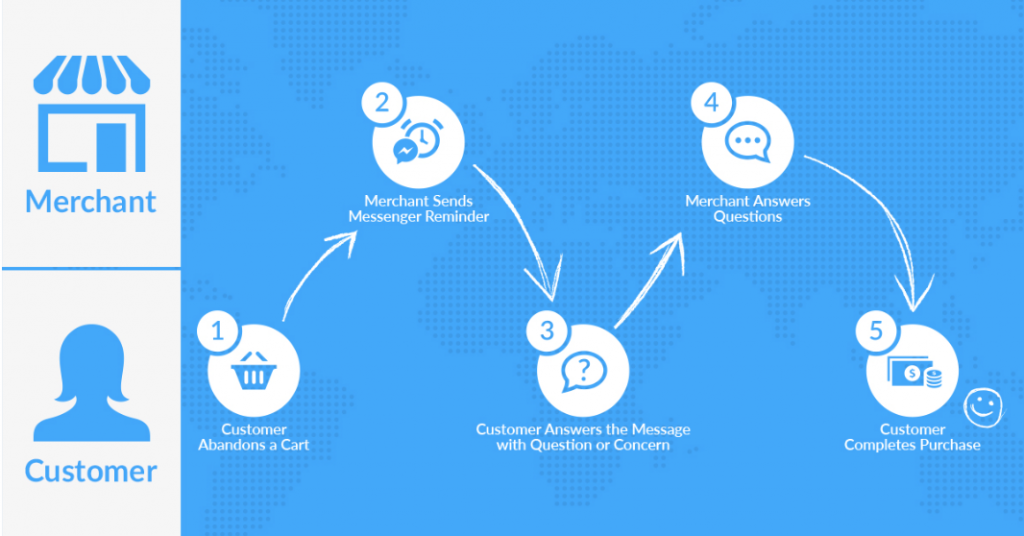When it comes to eCommerce, we all share the same goal: Increase sales without increasing advertising costs.
It’s a simple goal, however the methods to achieve it are complex. You could explore email marketing, paid advertising, influencer outreach, on-site optimization, social media promotion or, more likely, some combination of them all.
But here’s the thing: these are simply tactics.
Each and every one is underpinned by something far more powerful, one thing which success is dependent upon.
Effective communication.
That’s what sales come down to in the end. Sales are the transferral of trust, and trust is built through effective communication.
So to increase sales, the one thing your store needs to be focusing on is how to more effectively communicate with your consumers, and right now the channel that has the most potential for building that trust is Facebook Messenger. Messenger’s growing at an insane rate and has recently hit a user base of 1.2 billion users.
However, user numbers aren’t the most impressive statistic for Facebook Messenger.
No, that crown rests solely on the head of Messenger’s engagement statistics, where it absolutely destroys the current ROI champion of email.
We all know the stats for email marketing. On average, eCommerce can expect up to a 20% open rate and a 2.3% click rate. But check any of the tests that have been done on Messenger and you’ll see that the engagement statistics are vastly higher.
Hubspot ran a four-week test and achieved the below:
We’ve experienced something similar at Recart when converting some of our revenue-driving emails to the Messenger platform.
If you’re looking to build trust through effective communication with your audience, Messenger looks like it’s the way all smart marketers will be moving in the very near future.
If you’ve not already started getting your Messenger campaigns up and running, it’s high time you did. But before you do (or if you’re looking to optimize your current efforts) be sure to run through these essential hints the Recart team has picked up on to help your Messenger campaigns drive even more revenue.
Be Responsive!
Sending a message and not getting a response is incredibly annoying.
With email, people are more than happy to wait for a day or two for a response. Those are the timeframes they’ve become accustomed to with that channel. But for Messenger, people want quick responses. It’s a channel built around immediate conversation, and you need to make sure that you’re as responsive as possible.
It appears the speed with which you respond to users is important to Facebook as well. Check any store’s Facebook page and Facebook will tell you how long they take to respond to the average message.
Responding quickly to messages isn’t just good for basic customer service, it’ll help build trust with your customers.
That little mention in the bottom right hand side of your page’s screen shows potential users you’re an attentive brand who cares about its customers. Don’t shoot yourself in the foot and neglect your Messenger response times.
Set up Auto-Responses for When You Can’t be Responsive
In an ideal world you’d have a staff member who knows your business inside out and willing to work 24 hours a day. But we know that’s impossible. Fortunately, there are a couple of services offering the ability to automatically respond to queries and questions in a similar fashion to trigger-based email marketing.
Manychat is a good option here. You can create some pretty awesome AI-based responses which trigger on keywords. If you take the time to figure out a good sales funnel with these AI-based responses, you can actually sit back and let the AI handle a ton of your customer communication.
One of the best examples of this is the 1800-Flowers example Mark Zuckerberg used when unveiling Mark the new corporate capabilities of Messenger.
You can see that the conversation began with a keyword enquiry from the user – a query which kicked the AI into action to lead the user to the desired outcome.
This AI-based approach, while most definitely an interesting prospect for the future, is a little hit-and-miss at the moment. You’ve got to let your chatbots run for a while to gather the kind of queries your users are going to ask. Then you’ve got to build out relevant sequences that aren’t only targeted to those keyword queries, but also offer the desired result. If your users go off script and use terms you’ve not yet built campaigns around, it can completely screw up the user experience and any chance you had at converting them.
These AI-based interactions and conversations are going to form a central part of eCommerce’s customer communication. But they’re a long way from perfect and will take a little while for you to properly optimize.
If you’re looking to get a couple of sales-driving Messenger sequences off the ground and working to help secure more sales for you today, then here’s where I recommend you start.
Repurpose Your Best Email Sequences
You should already have a number of action-triggered email sequences set up for your store to help drive revenue. Generally speaking, most stores have at least one of the following set up:
- Cart abandonment campaign
- Receipt delivery
- Fulfillment and delivery updates
- Welcome messages
- Cross and up-sell promotions
You might even have a couple of other, more advanced sequences, triggering when someone looks at X items in a specific category, or even product notifications for people who have purchased specific products in the past.
All of these campaigns are ideal targets for you to move over to Messenger.
As outlined at the beginning, Messenger gets insanely high engagement rates. They kinda put email to shame.
If you have email sequences that are already getting good results, you should look at moving them over to Messenger to take advantage of the far higher open and click rates.
To kick it all off, I’d recommend starting with a cart abandonment Messenger campaign. Not only is cart abandonment a huge issue, but it’s also one of the biggest opportunities for increasing your revenue. We ran an 18-day test on email vs. Messenger for cart abandonment at Recart, and not only built a larger list, but also generated more revenue through Messenger.
As time goes by, you should be looking at moving as many of your successful email sequences over to Messenger as possible. Not as straight replacements (at least not at first), but to run them side by side to see what works best for your store.
However, before you get too excited at all the statistics I and other Messenger-focused services throw your way, you should know what it is that makes a successful messenger sequences.
Below are some tips on how to optimize your messages for better engagement and success.
Talk Like You’re Friends
With email, you’re talking at your users. It’s a one-directional channel where there are often huge delays between sending, reading, and replying to content.
People will save emails to read at specific times of day, which means you can send long sales letters and detailed promotional campaigns and not have to worry too much about putting people off.
Messenger, on the other hand, is used almost exclusively on mobile devices. The small screen and nature of Messenger mean people won’t engage with lengthy sales pitches or detailed promotions. At first glance, this looks like a detriment to Messenger, but it’s not. Messenger templates can be created in a fraction of the time because they’re rarely more than a sentence in length. They’re also more fun and a little easier to create as it’s akin to writing to your friends. In fact, during our tests we’ve found the more friendly and short your messages, the more people are likely to engage with them. Here are a few more specific tips we’ve discovered.
Write colloquially – Don’t be afraid to use contractions and let your brand personality show. Messenger facilitates friendly conversations and so you should be doing whatever you can to come across as a friend, rather than just another brand.
Use Emojis – Emojis are a great way to help your messages stand out. Check your message history with friends and you’ll undoubtedly find that you all use emojis. In other channels, emojis have proven to increase engagement. Twitter emojis increase engagement by 25.4% and Facebook emojis can increase like by 57%! Emojis are a great way to quickly increase engagement; all you need is a good message editor to help you pick the right emoji for your message.
Use GIFs and Images – High quality product images have long been known to increase eCommerce conversions. Again, if you check your message history you’ll likely find a ton of images and GIFs. You should be collecting high-quality images and GIFs to send to your users, not only to highlight the key selling points of a product, but also to help foster stronger relationships. Here’s a quick example of a chat I had with the customer support team at Intercom. That single GIF usage from them didn’t take a lot of effort, but it stuck in my mind as great customer service and ensures I’ll never hesitate to reach out to them again.
The real secret with writing effective messages is to write as you would with your friends. Don’t be afraid to have a little fun. Be silly – add in some images and GIFs that both highlight the awesomeness of your product and build better relationships. As long as you don’t overstep the line, you’ll build a better image of both your products and your brand.
Personalized Messages
Personalization always has been and always will be at the centre of effective marketing. Sending the right message at the right time to the right person is almost 50% of the battle in soliciting sales. Unfortunately, personalization is often referred to in the simplest of terms. Marketers are too fond of quoting Dale Carnegie on using a prospect’s first name. They’ve taken the below quote a little too seriously:
“Remember that a person’s name is to that person the sweetest and most important sound in any language.”
Using your prospect’s name is important. But it’s not the entirety of personalization.
Personalization goes beyond an easily-populated autofill option. With eCommerce, you have to look at the user’s purchase history, intent, and desire to send them truly personalized messages. To make it feel as though you really are talking to them one on one you have to also get the right message content.
With email, this is easy. All of the good email service providers will allow you to track on-site action so you can set up trigger actions and map the customer’s journey through each campaign. Below is an example from Drip.
You can see at the bottom that on-site visits are also tracked which, for eCommerce stores, is a great way to send relevant offers. If a user checks out a particular category 3 times you might want to send them a money-off incentive for that category of products.
Unfortunately, Messenger doesn’t yet have this level of tracking available. However, you can link it to some key aspects of the sales cycle and thus know what sort of personalized content to send.
In some of the tools, like ManyChat, you’re able to add tags to different users based on previous actions. This allows you to segment your audience so you only send relevant promotions to the right people.
Fortunately for eCommerce, you have a number of different personalization triggers to explore, ensuring you send the right message at the right time, to the right person. For example:
A sale can trigger any of the personalized messages below:
- Personalized receipts with offers for their next purchase
- Up or cross-sell recommendations based on the product that was purchased
- Delivery updates
- Follow-ups to see how that user is enjoying the product
An abandoned cart can trigger the below:
- A basic abandoned cart campaign
- A question asking why they didn’t go through with the purchase
- A relevant cross-sell of a product that may be more affordable/relevant to their needs
Personalization with Messenger is more than simply adding the user’s name and an image you think they might like. It may not have the advanced capabilities of email when it comes to segmentation and usage tracking, but you should be making efforts to implement even basic personalized campaigns that are based upon user action. Doing so will improve the relevance of your messages and build on Messenger’s already insanely high engagement rates.
If You’ve Not Yet Started with Messenger, There’s No Better Time to Begin
Facebook Messenger is in a strange place right now. It’s gaining huge amounts of interest from all over the marketing world, but as it’s still a relatively new channel, there aren’t that many knowledgeable gurus or established best practices. That lack of thought leadership might make it difficult to get started. However, don’t let that stop you.
Messenger is showing huge amounts of promise and the results it has been getting so far are outstripping email in every area where they overlap. Now is the best time to jump on the Facebook Messenger bandwagon, if for no other reason than you’ll be ahead of the late adopters. When they finally do understand the benefits Facebook Messenger offers, you’ll be 10 steps ahead of your competitors and laughing all the way to the bank.
If you want to get your first Messenger campaign set up today, I recommend checking out the article we put together over at Recart.com to understand exactly what you need in order to run effective Messenger campaigns and drive more revenue for your store.

Pete Boyle is chief copywriter and content manager for Recart.com and jumper.ai, two of the best tools for increasing eCommerce revenue through Messenger marketing. If you run an eCommerce store and want to leverage the power of conversational commerce, check out Recart and jumper.
Recommended articles
 Facebook Ads for eCommerce: 16 Strategies, Examples & Tips
Facebook Ads for eCommerce: 16 Strategies, Examples & Tips
 How to Build a Winning eCommerce Ads Strategy
How to Build a Winning eCommerce Ads Strategy
 Google Ads for eCommerce: Everything You Need to Know
Google Ads for eCommerce: Everything You Need to Know
 10X Your Traffic with PPC Management Software
10X Your Traffic with PPC Management Software
Comments
Powered by Facebook Comments
